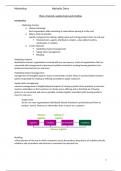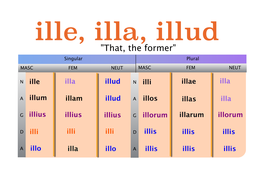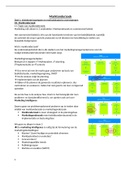Marketing Nathalie Dens
Place, channels, supply chains and retailing
Introduction
- Marketing channel
o Mutual advantage
Each organization adds something of value before passing it to the next
o Role in chain of activities
specific and geared to refining, adding value and moving product closer to end user
Manufacturers, agents, distributors, dealers, value-added resellers,
wholesalers or retailers
o 3 main elements
Marketing channel management
Supply chain management
Retailing
Marketing channel:
distribution channel, organizations involved with any one journey, chains of organizations that are
concerned with management of processes/activities involved in creating/moving products from
producers/manufacturers to end users
Marketing channel management:
management of intangible aspects, issues of ownership, control, flows of communication between
parties responsible for making an offering accessible to target customers
Supply chain management:
concerns management of tangible/physical aspects of moving a product from producer to end user,
must be undertaken so that customer can freely access offering and so that final act of buying
process is as convenient and easy as possible, includes logistics associated with moving products
closer to end users
Supply chain:
Set of 3 or more organisations/individuals) directly involved in up/downstream flows of
product, service, finances or information from a source to a customer
Retailing:
critical element of the way in which consumers access the products they desire, all activities directly
related to sale of products and services to consumers for personal use
1
, Marketing Nathalie Dens
Channel management
- Value delivery network
o Interdependence
o Share or reduce uncertainty
o Focus on value delivery upstream and downstream (win-win)
- Reduce uncertainty
o Reduces complexity
If an intermediary is introduced => number of transactions falls drastically
o Increasing value, competitive advantage
using intermediaries => producers reduce purchase risk because intermediaries have
skills and core competencies necessary to meet end users’ requirements
o Routinization
performance risk can be reduced by improving transaction efficiency,
standardizing/routinizing transaction process allows distribution costs to be reduced
By regulating order sizes, automating operations, managing delivery cycles
and payment frequencies
o Specialization
intermediaries can provide specialist resources, value can also be improved for
customers by helping them to locate offerings they want
Specialist training services, maintenance, installation, bespoke deliveries,
credit facilities, sorting out, accumulation, allocation, assorting
other utility based benefits
place, time, ownership and information utility
Value delivery network:
network consisting of organization, suppliers, intermediaries and customers that engage in
partnerships to enhance the performance of the entire system
Specialist resources:
a service that has real value to other channel members or end users
Sorting out:
grading products into different sizes, qualities, or grades
Accumulation:
bringing together different products from different producers to provide a wider category choice
Allocation:
‘breaking bulk’, involves disaggregating bulk deliveries into smaller lot sizes that customers are able
(and prefer) to buy
Assorting:
assembling different collections of goods/services thought to be of value to the customer
Place utility:
they assist end users by bringing a product produced a long distance away to a more convenient
location for purchase and consumption
Time utility:
they help end user because the product might be manufactured during the week, but purchased and
consumed at the weekend
2
Place, channels, supply chains and retailing
Introduction
- Marketing channel
o Mutual advantage
Each organization adds something of value before passing it to the next
o Role in chain of activities
specific and geared to refining, adding value and moving product closer to end user
Manufacturers, agents, distributors, dealers, value-added resellers,
wholesalers or retailers
o 3 main elements
Marketing channel management
Supply chain management
Retailing
Marketing channel:
distribution channel, organizations involved with any one journey, chains of organizations that are
concerned with management of processes/activities involved in creating/moving products from
producers/manufacturers to end users
Marketing channel management:
management of intangible aspects, issues of ownership, control, flows of communication between
parties responsible for making an offering accessible to target customers
Supply chain management:
concerns management of tangible/physical aspects of moving a product from producer to end user,
must be undertaken so that customer can freely access offering and so that final act of buying
process is as convenient and easy as possible, includes logistics associated with moving products
closer to end users
Supply chain:
Set of 3 or more organisations/individuals) directly involved in up/downstream flows of
product, service, finances or information from a source to a customer
Retailing:
critical element of the way in which consumers access the products they desire, all activities directly
related to sale of products and services to consumers for personal use
1
, Marketing Nathalie Dens
Channel management
- Value delivery network
o Interdependence
o Share or reduce uncertainty
o Focus on value delivery upstream and downstream (win-win)
- Reduce uncertainty
o Reduces complexity
If an intermediary is introduced => number of transactions falls drastically
o Increasing value, competitive advantage
using intermediaries => producers reduce purchase risk because intermediaries have
skills and core competencies necessary to meet end users’ requirements
o Routinization
performance risk can be reduced by improving transaction efficiency,
standardizing/routinizing transaction process allows distribution costs to be reduced
By regulating order sizes, automating operations, managing delivery cycles
and payment frequencies
o Specialization
intermediaries can provide specialist resources, value can also be improved for
customers by helping them to locate offerings they want
Specialist training services, maintenance, installation, bespoke deliveries,
credit facilities, sorting out, accumulation, allocation, assorting
other utility based benefits
place, time, ownership and information utility
Value delivery network:
network consisting of organization, suppliers, intermediaries and customers that engage in
partnerships to enhance the performance of the entire system
Specialist resources:
a service that has real value to other channel members or end users
Sorting out:
grading products into different sizes, qualities, or grades
Accumulation:
bringing together different products from different producers to provide a wider category choice
Allocation:
‘breaking bulk’, involves disaggregating bulk deliveries into smaller lot sizes that customers are able
(and prefer) to buy
Assorting:
assembling different collections of goods/services thought to be of value to the customer
Place utility:
they assist end users by bringing a product produced a long distance away to a more convenient
location for purchase and consumption
Time utility:
they help end user because the product might be manufactured during the week, but purchased and
consumed at the weekend
2






